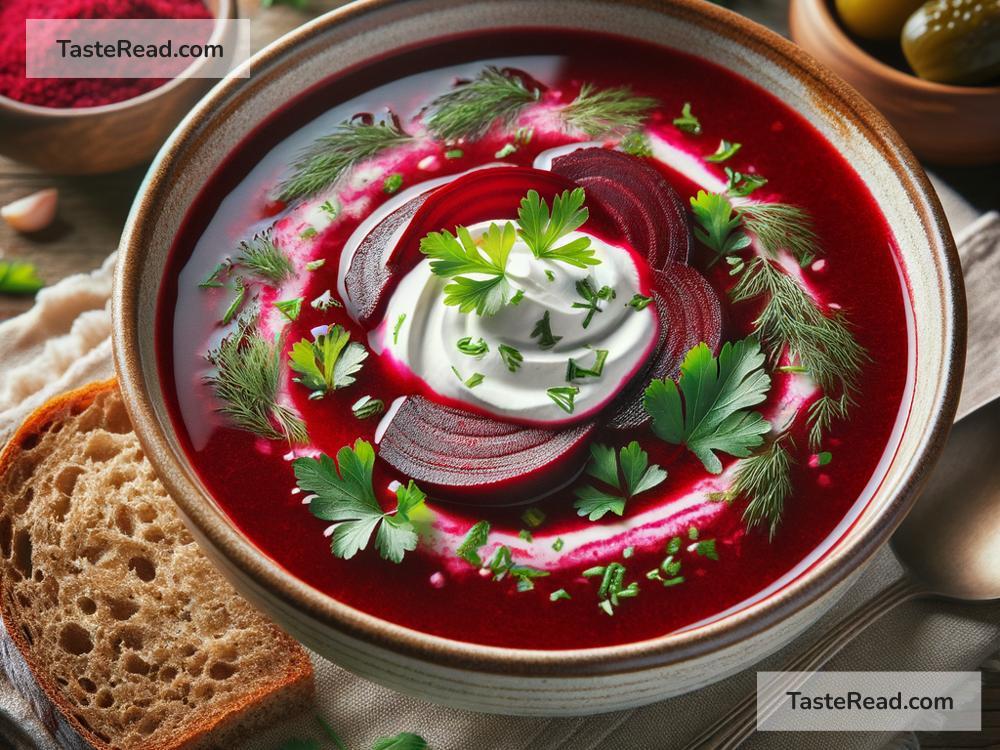Journeying Through Traditional Russian Borscht Variations
Russia is a country rich in tradition, history, and culture, and its food is no exception. Among the many traditional dishes that represent Russian cuisine, borscht stands out as a well-loved favorite. This hearty soup, made with beets, meat, and vegetables, offers comfort in every spoonful. While borscht is commonly associated with Russia, it’s also popular in Ukraine, Poland, Belarus, and other neighboring countries. Here, we’re taking a journey through the traditional Russian variations of borscht, exploring its tastes, textures, and the unique ways it’s prepared.
What is Borscht?
At its core, borscht is a soup with a vibrant deep-red color that comes from beetroot, one of its key ingredients. It is often flavored with sour cream, fresh herbs, and garlic. Traditional borscht recipes include a mix of ingredients like cabbage, carrots, potatoes, onions, and sometimes tomatoes, which give the soup a rich and hearty texture. Meat, usually beef or pork, is added for an extra layer of flavor and protein. However, there are meatless versions too, catering to vegetarians and those observing fasting.
Borscht isn’t just food—it’s a tradition deeply rooted in family gatherings and celebrations. Its flavors are meant to warm both body and soul, especially during Russia’s cold winters.
Origins of Borscht
The origins of borscht date back centuries. While it’s often linked to Russia, its roots trace to Eastern Europe as a broader culinary tradition. Regional variations developed over time, as families and communities used local ingredients to create their own versions of the soup. Some of these variations are so distinct that they almost feel like entirely different dishes. Russian borscht, however, has its own special identity that continues to bring together kitchens, homes, and generations.
Classic Russian Borscht
In Russia, borscht is typically made with a beef or pork bone broth, giving it a rich and comforting base. The beetroot is the star ingredient, lending a slightly sweet flavor and iconic ruby-red color. Cabbage adds crunch and texture, while potatoes provide heartiness. The soup is seasoned with vinegar or lemon juice, which balances the sweetness of the beets with tangy notes. Ground black pepper and bay leaves round out the flavor for a perfect balance.
One unique aspect of Russian borscht is the tradition of serving it with a dollop of sour cream and a slice of dark rye bread. Sour cream adds creaminess, while rye bread provides a hearty counterpart to the soup’s richness. It’s more than just food—it’s an experience.
Vegetarian Borscht
Not all Russian borscht is made with meat. A vegetarian version, known as “fasting borscht” or “Postny Borshch,” is just as popular. This vegetarian borscht is often made during religious fasting periods, such as Lent, when Orthodox Christians abstain from eating meat and dairy. Instead of meat broth, cooks use vegetable stock or water. They rely on the natural flavors of the vegetables—particularly the beets—to create a soup that’s light yet satisfying.
Vegetarian borscht includes similar ingredients, like cabbage, carrots, potatoes, and onions, but without the meat. It might also feature beans or mushrooms to add protein and texture. Despite being meatless, it retains the same rich, tangy flavor that makes borscht so special.
Cold Borscht: A Summer Treat
Not all versions of borscht are served hot. In Russia, there’s also a refreshing cold version known as “Svekolnik.” This chilled soup is perfect for warm summer days when hot dishes feel too heavy. Svekolnik starts with cooked and shredded beets, sometimes mixed with cucumber or radishes for crunch. Instead of broth, it uses a base of diluted kefir or buttermilk, giving it a tangy and creamy feel. Fresh herbs, like dill, enhance the flavor, and hard-boiled eggs are often added as a garnish.
Svekolnik proves that borscht isn’t just for winter—it can be enjoyed all year long in different forms.
Regional Twists and Family Traditions
One of the most exciting aspects of borscht is how every family and region has its own version of the soup. Some cooks make their borscht thick and chunky, while others prefer it thinner and broth-like. In Moscow, for example, borscht might include smoked meat for extra depth of flavor. In rural areas, families might add wild mushrooms or garden-fresh vegetables, depending on availability.
Recipes are often passed down through generations, and many cooks add their own secret ingredients to make their borscht truly unique. Some might add apples for sweetness, while others might include prunes for a more complex flavor. No matter the differences, every bowl of borscht carries love and care.
The Soul of Russian Hospitality
Borscht isn’t just food in Russia—it’s a symbol of hospitality. When you visit a Russian home, it’s common to be greeted with a warm bowl of borscht. It’s a dish that brings people together, whether at weddings, holidays, or quiet family dinners. Each ingredient is prepared with patience and care, making it much more than just a simple soup.
Conclusion
Traditional Russian borscht is a dish as rich in history as it is in flavor. Whether served hot with beef, vegetarian during Lent, or cold on a summer afternoon, borscht remains an essential part of Russian culinary heritage. Its many variations speak to the creativity and adaptability of home cooks across the country.
The next time you sit down for a bowl of borscht—whether you make it yourself or enjoy it at a Russian restaurant—take a moment to savor the flavors and remember the long tradition behind this beloved dish. It’s more than just soup—it’s a journey through Russian culture and a testament to the power of food to bring people together.


